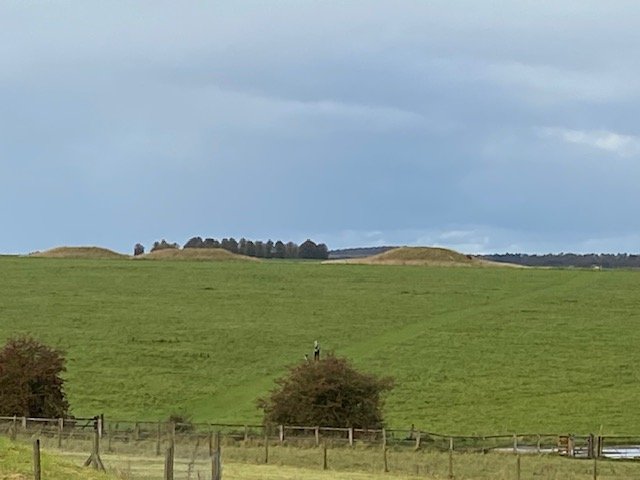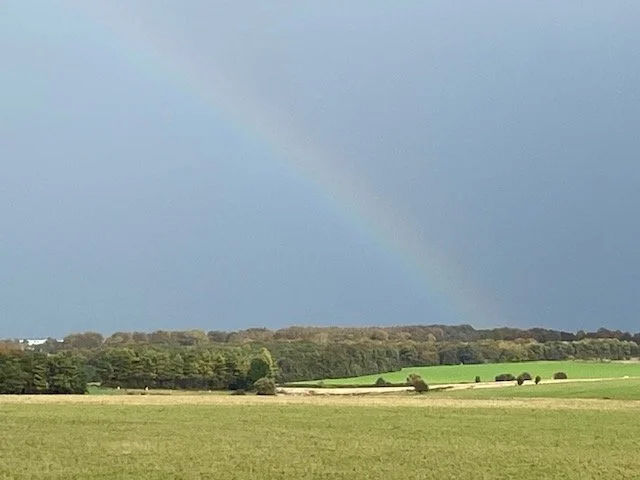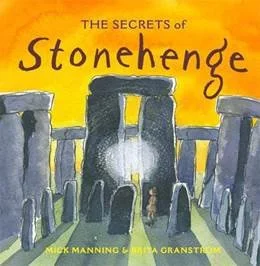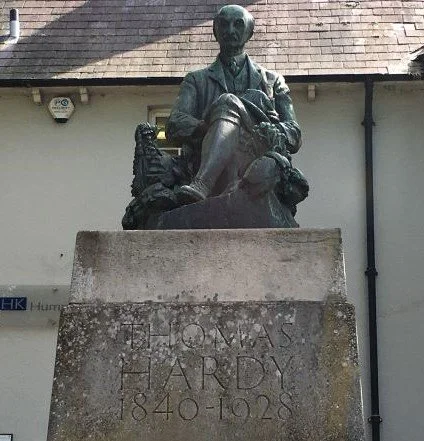Stonehenge
Pile of Stone-henge! so proud to hint yet keep
Thy secrets, thou that lov'st to stand and hear
The Plain resounding to the whirlwind's sweep,
Inmate of lonesome Nature's endless year;
Even if thou saw'st the giant wicker rear
For sacrifice its throngs of living men,
Before thy face did ever wretch appear,
Who in his heart had groaned with deadlier pain
Than he who, tempest-driven, thy shelter now would gain.
from ‘Guilt and Sorrow or Incidents upon Salisbury Plain’ by William Wordsworth
Geoffrey of Monmouth would have us believe that Aurelius Ambrosius, a 5th century King of Briton, wanted a fitting monument for his compatriots murdered by the Saxon warrior, Hengist. Thus he summoned the sorcerer, Merlin, who told him to bring a stone circle, known as the Giant’s Dance, from the mountains of Killaraus in Ireland, to stand on the chosen spot. However, Stonehenge actually began its life around 3000BC, long before the arrival of the Anglo-Saxons.
The mysteries of its origins, the atmospheric location and eerie beauty of the stones mean visitors are drawn to Stonehenge in their thousands (over a million people a year visit the site). It has inspired works of art from Turner and Constable and poems by Samuel Daniel and Wordsworth amongst others.
I have been fortunate enough to visit Stonehenge many times, as a child, a parent and as a history lover. First taken by my parents, many years ago, I was delighted to be able to tell them about the burial mounds or barrows in the surrounding countryside which we had been told about at school (I have no idea why!). Visiting was a very different experience then- apparently I have actually walked right up to the stones and touched them as this was allowed at that time- and has changed over the years from free-wandering to parking on the other side of the road and reaching the site by walking through a tunnel underneath the road to the current visitors’ centre and facilities. Each experience has been very different- one of the many reasons I like to return to places whenever the opportunity arises.
On my most recent visit, there was a hailstorm. Hard pellets of ice pounded everyone, blown across the plain by a bitingly cold wind at visitors slipping and sliding across the muddy ground. It gave a real sense of the isolation of the site and how exposed to the elements it is- and then the sun came out and a rainbow appeared, making everything seem magical again!
The book-lover in me can never visit without thinking of poor Tess Durbyfield and Angel Clare, fleeing across Wessex.
They had proceeded thus gropingly two or three miles further when on a sudden Clare became conscious of some vast erection close in his front, rising sheer from the grass. They had almost struck themselves against it.
"What monstrous place is this?" said Angel.
"It hums," said she. "Hearken!"
He listened. The wind, playing upon the edifice, produced a booming tune, like the note of some gigantic one-stringed harp. No other sound came from it, and lifting his hand and advancing a step or two, Clare felt the vertical surface of the structure. It seemed to be of solid stone, without joint or moulding. Carrying his fingers onward he found that what he had come in contact with was a colossal rectangular pillar; by stretching out his left hand he could feel a similar one adjoining. At an indefinite height overhead something made the black sky blacker, which had the semblance of a vast architrave uniting the pillars horizontally. They carefully entered beneath and between; the surfaces echoed their soft rustle; but they seemed to be still out of doors. The place was roofless. Tess drew her breath fearfully, and Angel, perplexed, said----
"What can it be?"
Feeling sideways they encountered another tower-like pillar, square and uncompromising as the first; beyond it another and another. The place was all doors and pillars, some connected above by continuous architraves.
"A very Temple of the Winds," he said.
The next pillar was isolated; others composed a trilithon; others were prostrate, their flanks forming a causeway wide enough for a carriage and it was soon obvious that they made up a forest of monoliths grouped upon the grassy expanse of the plain. The couple advanced further into this pavilion of the night till they stood in its midst.
"It is Stonehenge!" said Clare.
"The heathen temple, you mean?"
"Yes. Older than the centuries; older than the d'Urbervilles!...’
She is sleeping, here on the stones, when she is taken for the murder of Alec D’Urberville. This, for me, is one of Hardy’ most powerful, poignantly written scenes and one which never fails to make me cry, making Stonehenge one of my favourite Literary Locations!
A wonderful book for children by Mick Manning & Brita Granstrom, ‘The Secrets of Stonehenge’ explains the history of the monument from its origins to the present day.
Stonehenge
Salisbury SP4 7DE
Stonehenge is managed by English Heritage- you can find out more here.
You can read about Hardy’s birthplace here and Casterbridge- Dorchester- here.











